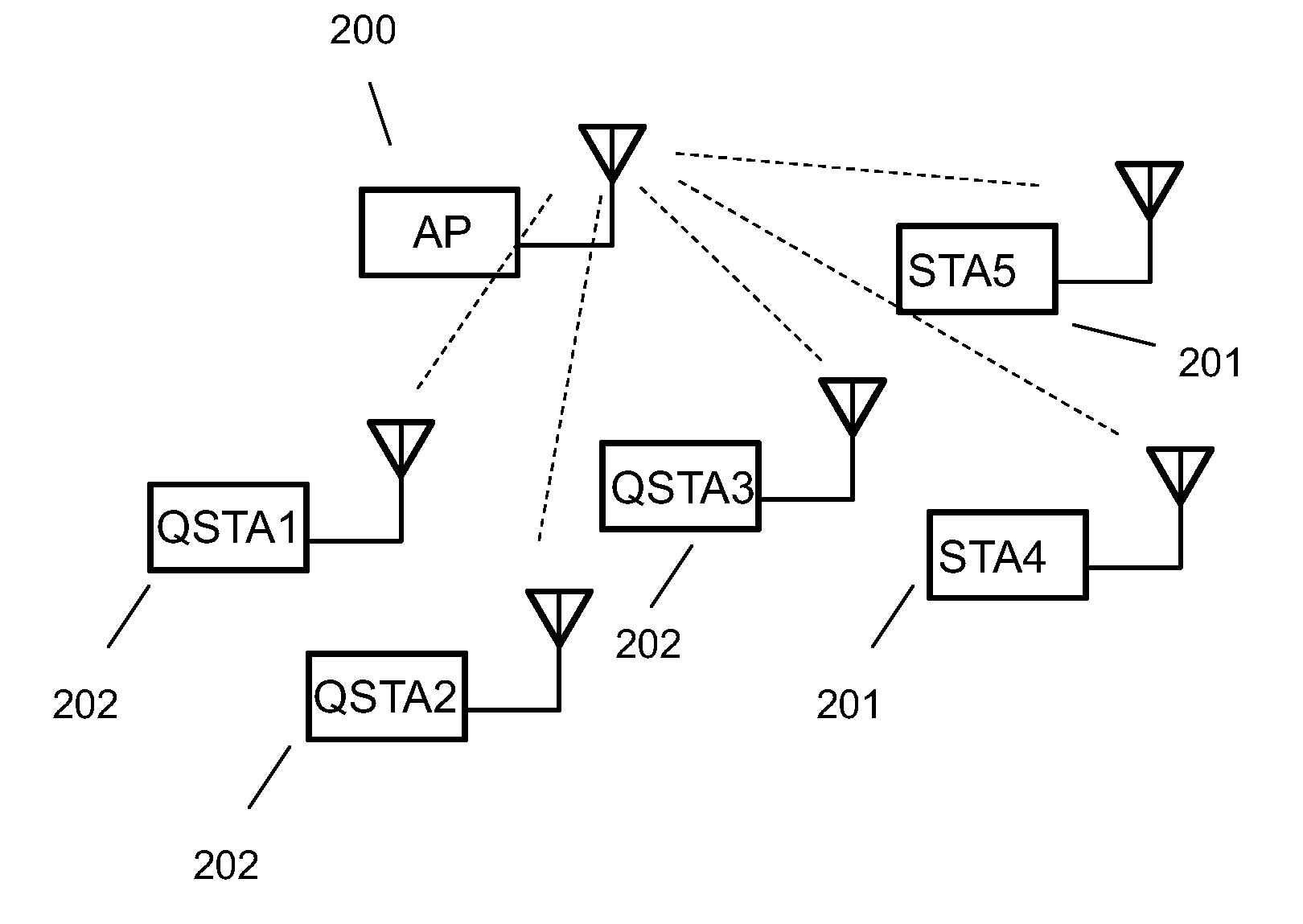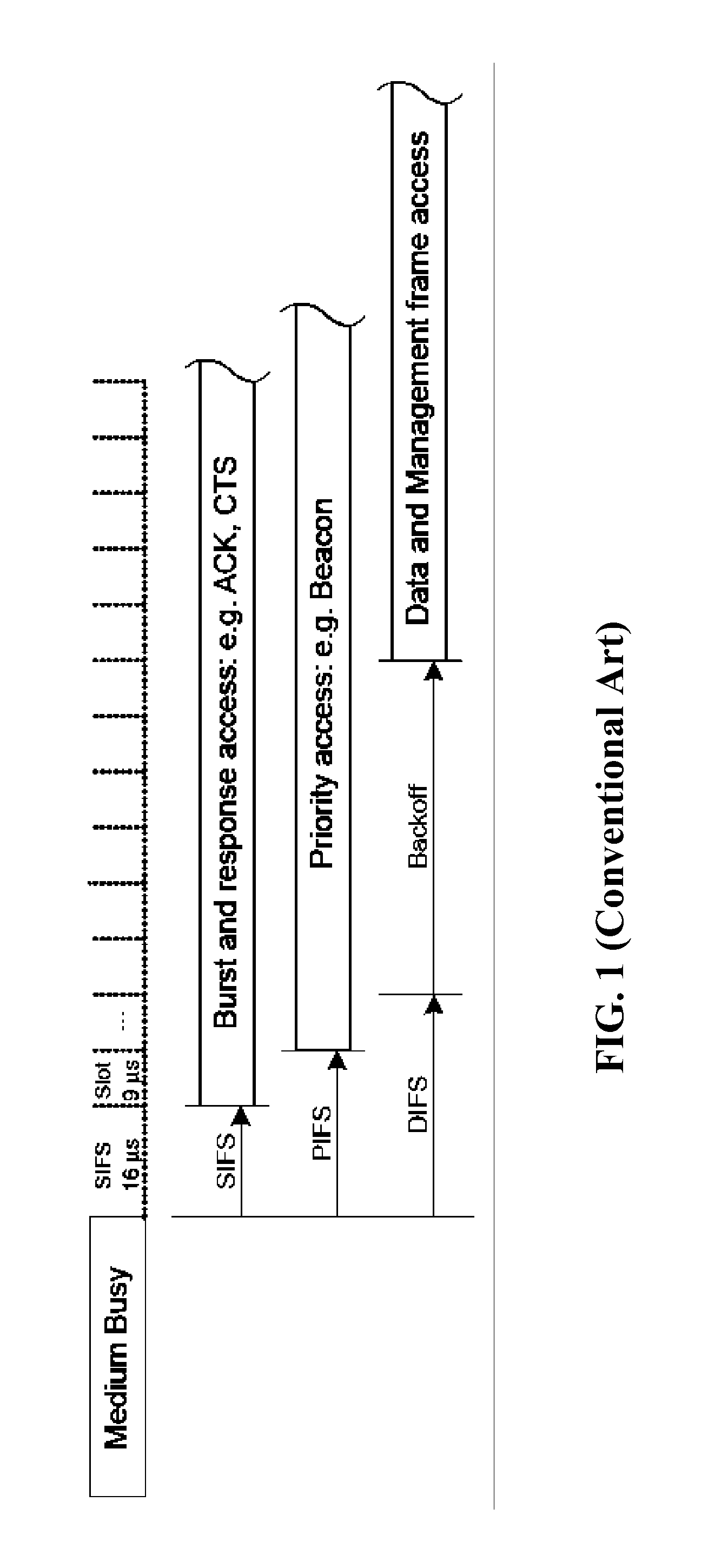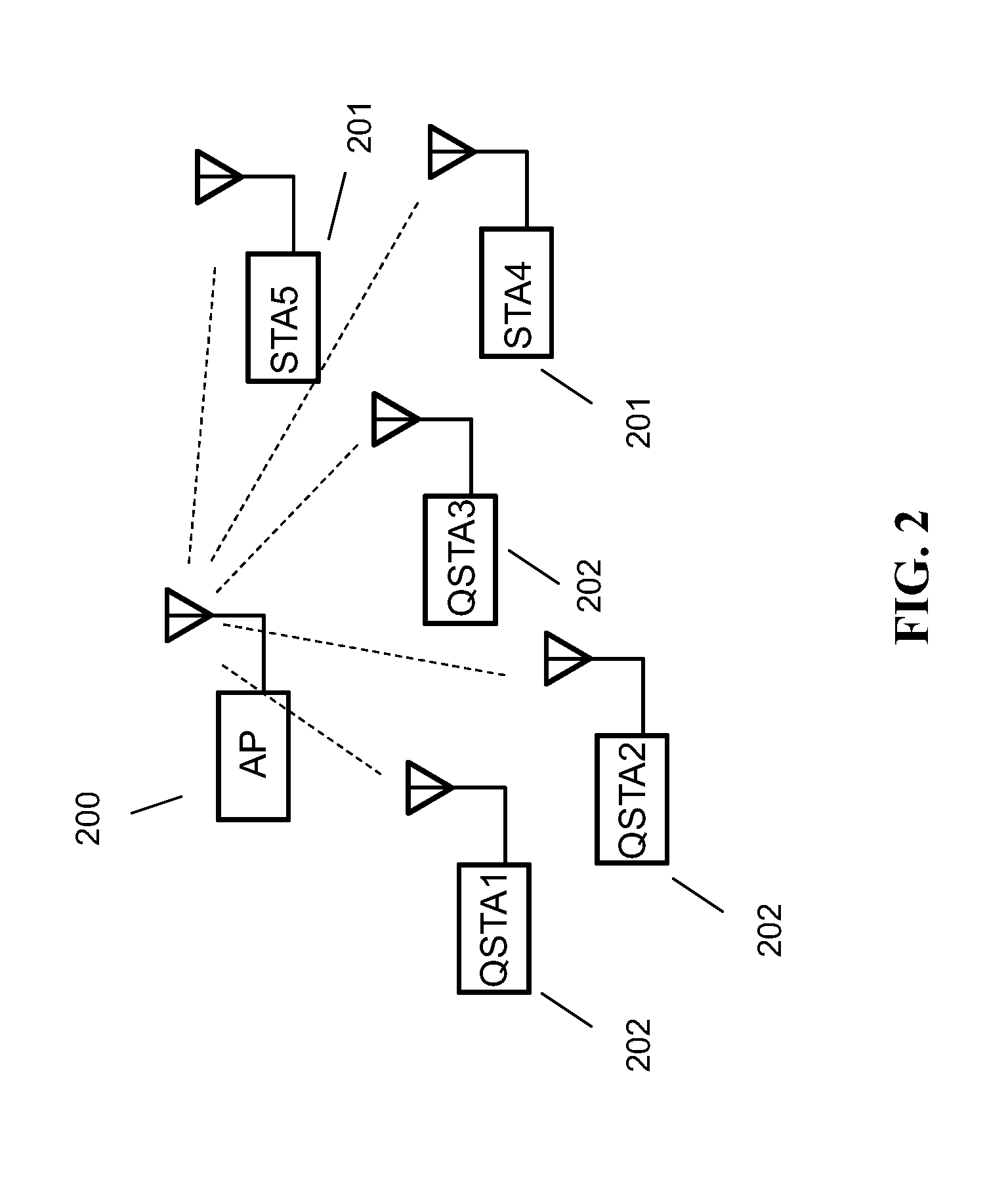Systems, methods and apparatuses for wireless communication
- Summary
- Abstract
- Description
- Claims
- Application Information
AI Technical Summary
Benefits of technology
Problems solved by technology
Method used
Image
Examples
first embodiment
CF-Poll with ACK
[0055]FIG. 6 illustrates an exemplary time diagram of the first embodiment. Specifically, FIG. 6 shows the time diagram in a case that the AP fails to correctly receive a packet due to bit error from QSTA2 in the exhaustive polling phase.
[0056]In this embodiment, the AP sends a CF-poll with ACK, which is for the previous QSTA data transmission. In the exhaustive polling phase, the AP sends a CF-poll to the QSTA1 and sends a CF Poll with an ACK 600 to the QSTA2. Also, the AP sends a CF-poll to the QSTA3 with a Negative Acknowledgement (NACK) 601 to the QSTA2 as the AP fails to correctly receive the data 602 from QSTA2. After the AP receives the data 605 from QSTA3, the AP resends a CF-poll to the QSTA2 to get the data 603 from QSTA2. Finally, once the AP successfully receives the data 603 from the QSTA2, the AP ends the CAP 604, which is the polling-based channel access period.
[0057]FIG. 7 illustrates an exemplary a time diagram of the first embodiment in the case tha...
second embodiment
[0064]FIG. 12 illustrates an exemplary time diagram of the proposed scheduler in a bi-directional transmission situation, according to the second embodiment of the invention.
[0065]If the AP has data streams to some QSTAs, the AP may include the data into CF-poll packets as shown in FIG. 12. The QSTA, which receives the CF-poll with the data, may send a data packet with ACK 1200 to the received data. If either of data to the QSTA and data to the AP is lost during the exhaustive phase 1201, the AP can resend the CF-poll with the data to the QSTA in the selective phase 1202 until all data are successfully received by the AP and the QSTA.
third embodiment
Consolidated Polling Packet
[0066]FIG. 13 illustrates the protocol for an embodiment of the invention utilizing a consolidated CF-poll. According to this embodiment, all CF-polls are consolidated into one CF-poll. The consolidated CF-poll 1300 specifies the granted data streams which can be transmitted in the exhaustive polling phase and the order of transmission. Each QSTA (QSTA1-QSTA3) transmits data according to the order specified by the CF-poll 1301. After the exhaustive polling phase, the AP sends the next consolidated CF-poll 1302, which specifies the granted data stream(s) that the AP did not receive in the exhaustive polling phase, for example, TXOP21303. The AP continues to send consolidated CF-polls until all the granted data streams are successfully received within the SI, and ends the polling phase with a CF-end 1304. Subsequently, the CSMA phase 1305 is conducted.
PUM
 Login to View More
Login to View More Abstract
Description
Claims
Application Information
 Login to View More
Login to View More - R&D
- Intellectual Property
- Life Sciences
- Materials
- Tech Scout
- Unparalleled Data Quality
- Higher Quality Content
- 60% Fewer Hallucinations
Browse by: Latest US Patents, China's latest patents, Technical Efficacy Thesaurus, Application Domain, Technology Topic, Popular Technical Reports.
© 2025 PatSnap. All rights reserved.Legal|Privacy policy|Modern Slavery Act Transparency Statement|Sitemap|About US| Contact US: help@patsnap.com



